“Lords” of the Ring – Post Pearl Harbor
My previous two posts described a research project that I began as a result of finding a WWII artifact that belonged to my father-in-law, Erwin A. Schroder. The first post outlined the reasons why I embarked on this project. The second post highlighted the first 4 men on the list of naval officers that I am researching. This post focuses on the last 4 persons on the ring. All but one were not on the USS Patterson when it was attacked in Pearl Harbor in 1941.
John B. Wilkes
John was born in New York on May 6, 1914. He attended Duke University and Stanford University prior to joining the military in March of 1939. I cannot find 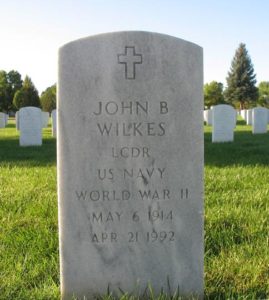 evidence for what he did for the first two years of service.
evidence for what he did for the first two years of service.
On January 21, 1941, John arrived in Pearl Harbor aboard the USS Rowan (DD-405) and reported for duty on the Patterson, so he is the only one of the four men in this post who was assigned to the Patterson during the Pearl Harbor attack. In March, 1943, he left the Patterson for the Service Force of the 7th Fleet. In April of 1945, he married Ms. Eva Porter. Wilkes commanded the USS Lewis Hancock (DD-675) from October 25, 1945 to November 1, 1945 He was active in the Naval Reserves past 1955 and retired at the rank of LtCdr. He died on April 21, 1992, and is buried at Fort Logan National Cemetery.
James E. Hook
James E. Hook was born on April 3, 1919 in Ohio and was commissioned in 1940. In January 1942, he hitched a ride on the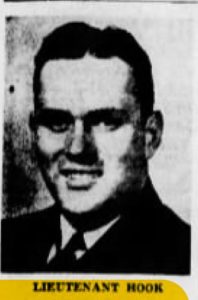 USS Harris (APA-2) from San Diego to Pearl Harbor where he reported for duty on the Patterson. In November of 1943 he was granted 30 days leave from the Patterson and he went back to Ohio and married Ms. Emmy Lou Thompson in December. By August of 1944, Hook was leaving the Patterson for duty assignment by the Commandant of the 12th Naval District. In November of 1945, James and Emmy Lou had a daughter, Linda Lou Hook.
USS Harris (APA-2) from San Diego to Pearl Harbor where he reported for duty on the Patterson. In November of 1943 he was granted 30 days leave from the Patterson and he went back to Ohio and married Ms. Emmy Lou Thompson in December. By August of 1944, Hook was leaving the Patterson for duty assignment by the Commandant of the 12th Naval District. In November of 1945, James and Emmy Lou had a daughter, Linda Lou Hook.
James was still listed in the Naval Reserve in 1955 and apparently retired sometime prior to 1961 probably at the rank of LtCdr. Hook died in Orange, CA on December 31, 1981
George W. Jenings
George W. Jenings was born in Buffalo, New York, on August 26, 1918. He was apparently an accomplished athlete. He attended San Jose Junior College and then Occidental College where he distinguished himself as a half-miler and as a back on the football team. There is a famous picture of him that appeared in the May, 4, 1942 issue of LIFE Magazine in which he is shown with the “tape” firmly engaging his teeth at the finish line in a half mile race. He represented Occidental in the National AAU Track and Field meet that same year. In the fall of 1942, George played football for the Wilmington Clippers of the American Association. He was apparently in Wilmington on option from the Philadelphia Eagles. He played his last game for the Clippers in October and was then directly off to the Navy.
He received his commission as an Ensign in February, 1943 and reported for duty on the Patterson in June of that same year. He served on the Patterson until the end of the war. Robert Coburn’s website posted a press release about a rescue involving Jenings who showed great skill and courage in rough conditions.
Sometime in the late 1940s, George married Evelyn F. Barrille, an accomplished ballet dancer and choreographer who took classes from George Balanchine and danced frequently with the Radio City Music Hall Corps de Ballet and other well-known groups. They had two sons, one of whom was born on Guam after Evelyn moved there to be near George’s naval assignment. They divorced in 1956.
According to the USS Charles H. Roan (DD-853) 1952 cruise book, Lt Jenings was on the staff of the Commander of Destroyer Division 102. To the best of my knowledge, he was still in naval service in 1955. He died on January 5, 1990 in Orange, CA. It is interesting to note that this was also the place of death for James Hook.
Erwin A. Schroder
Erwin was born in Blue Grass, IA in 1915. He attended Iowa State University and graduated with a degree in Dairy Industry and Economics . Shortly after the Pearl Harbor attack, he enlisted in the Navy and went to The U.S. Naval Reserve Midshipmen’s School at Columbia University where he received his commission as an ensign in February, 1943. After attending gunnery and torpedo school, he was assigned to the USS Patterson in August 1943. After a short stint in temporary duty, he joined the crew permanently in September 1943, just one week before the USS McCalla and the Patterson collided as I described in a previous post. Erwin served on the Patterson for the duration of the war. His Asiatic-Pacific Campaign  medal/ribbon has a silver star and 3 bronze stars on it, indicating that his service spanned 8 of the Patterson’s 13 campaigns.
medal/ribbon has a silver star and 3 bronze stars on it, indicating that his service spanned 8 of the Patterson’s 13 campaigns.
As “1st Lieutenant” he stayed on the Patterson as she sailed back through the Panama Canal into the Atlantic and on to New York. He stayed on board as the crew prepared for the decommissioning of the Patterson. After decommissioning, Erwin and two other crewmen (Ens. Frank. N. Crenshaw and Ens. John Verner) volunteered to remain on the Patterson as “ship-keepers” until she was sold. He claimed to be the last crew member to leave the Patterson.
During his time in the Navy he served as a Destroyer Torpedo Officer and Assistant Gunnery Officer in addition to 1st Lieutenant. His training included time at the West Coast Sound School in San Diego, Destroyer Torpedo School at Noumea, New Caledonia, and Anti-Aircraft School in Hawaii.
After the war, Erwin earned a degree in business at Austin College in Sherman, TX, worked in the insurance business, and then for the IRS. He and his wife, Marie, had 4 children (2 boys and 2 girls). Tragically, their oldest son was killed in a car accident at the age of 16. The Schroders worked very closely with exchange student programs and hosted many students from around the world.
Erwin stayed in the Naval Reserve until 1963 when he retired at the rank of Lt. He then joined the Iowa National Guard and retired from that position in 1975 at the rank of Captain. He was one of the “regulars” at the annual Patterson reunions until the late 1990s when he suffered a stroke. His wife, Marie, continued to attend the reunions, even traveling to Australia for a reunion of Patterson crew and HMAS Canberra survivors (The Patterson pulled 400 survivors out of the water after Canberra was sunk at the Battle of Savo Island). Erwin died in 2000 and was buried in his Navy dress uniform with military honors. He is buried in Burlington, IA.
This finishes my final installment of honoring the men whose names are born by this officer napkin ring. I wish I had more history to include. My research is not 100% conclusive that this ring was on the Patterson from the time she was commissioned until her decommissioning, but there is much to support that assumption. Erwin’s daughters remember him using the ring when they were young, which is more provenance supporting the notion that it was a keepsake that he took with him as he left the ship for the last time in NY.
I wish I had talked to Erwin about the ring to get his view of things. Note to self: Talk to people now because you never know when it will be too late to do so. UPDATE: The ring has been accepted into the collection of the National Museum of the U.S. Navy in Washington, DC. Here is a link to that story.
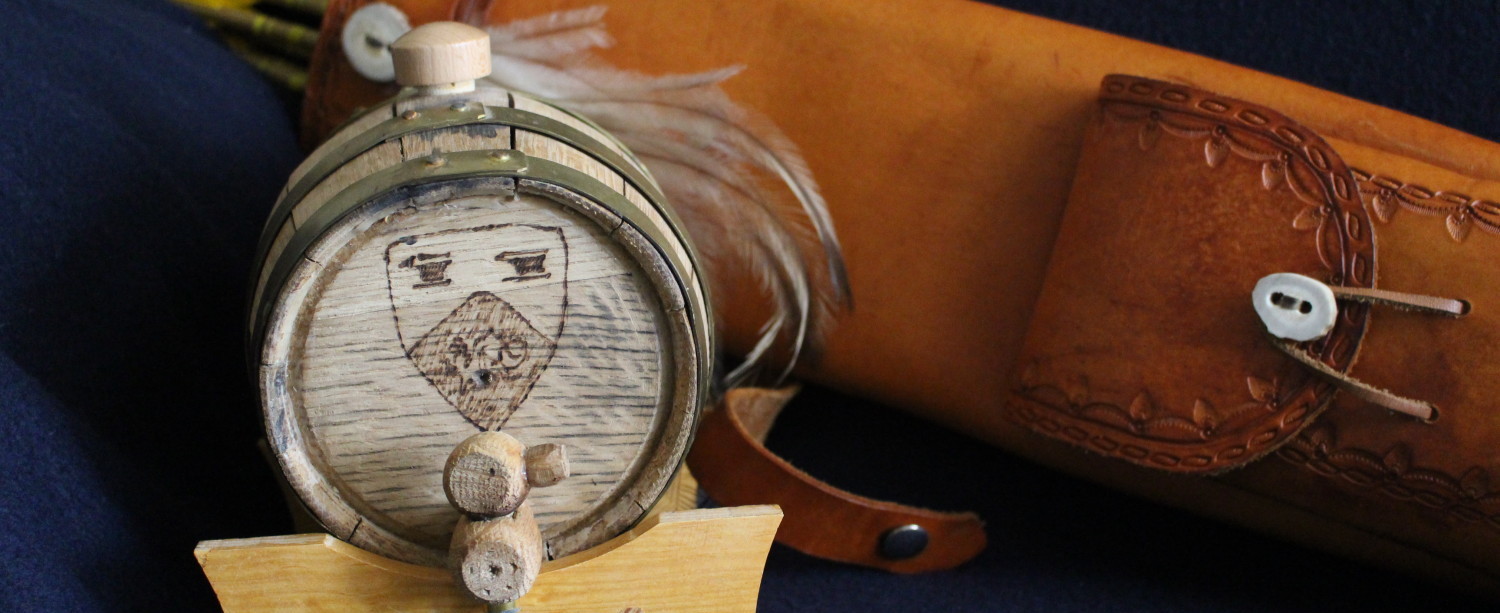
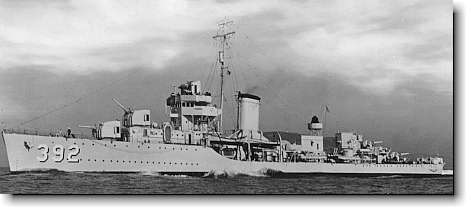

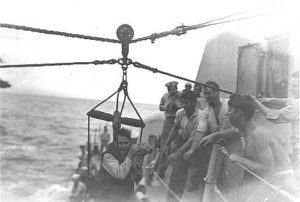
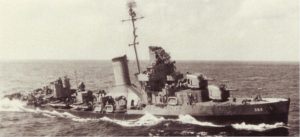
Love the photo of the finish line!
We have that picture in our home – George was by husband’s uncle.
Thank you for your comment, Anne! I sent you an email regarding another event involving George Jenings.
Dave
Uncle George
I think I only got to meet him once and it wasn’t for very long. I do say my uncle played for the Eagles. I got to coach my sons the Arroyo Grande Eagles
Blessings